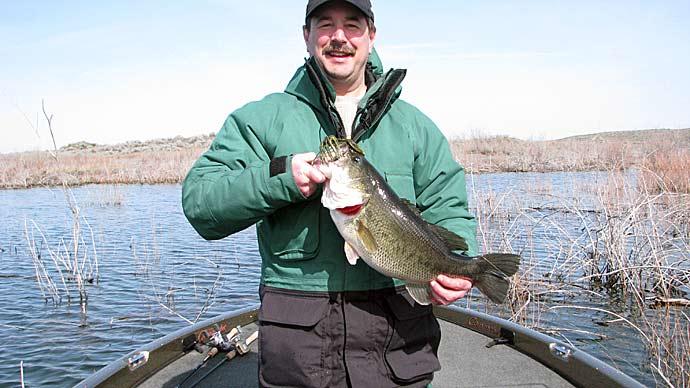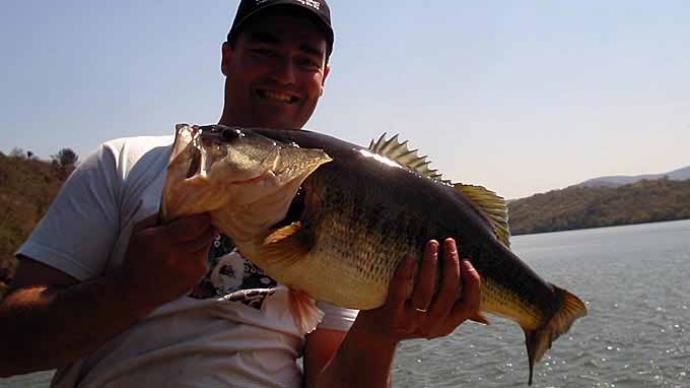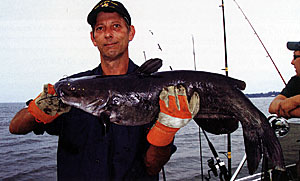
A hazy flashlight beam cuts through the warm, sultry, late June murk, illuminating a fluorescent green, softball size bobber. The bobber takes a slow quarter turn, bounces once then takes off, plowing water like the barrel from the first scene of Jaws. The bobber disappears under the water as my fishing partner grabs the rod and sets the hook. The water explodes and the fight is on. Five minutes later a huge, 25 pound channel catfish slides into the net. The year is 2008 and this fish and its twin have just won a bunch of money for my teammates in a Father's Day fishing derby on Lake Champlain. In 2008, Father’s Day weekend fell on June 14th, 15th and 16th and the water temperatures on those dates were 64 °F, 65 °F and 66 °F respectively here in upstate New York. Catfish were literally jumping into the boat, lining up for us to weigh them in!
Fast forward one year later to Father's Day 2009. The boat, crew of guys, target fish, location, bait and tackle were all the same. We were hoping to make a repeat of the last year's performance. We had this catfish derby figured out and we planned to rake in the big bucks again. Huh? No two years are alike. In 2009, Fathers Day weekend and the derby, fell on the 19th, 20th and 21st of June, a few days later (and theoretically warmer) than 2008. Ha again! Mother Nature had different ideas and she gave us a cooler upstate New York summer. We started fishing in a cold rain that only got colder as the weekend wore on. Over those three days the water temperatures were 62 °F, 60 °F and a cold 58 °F on the last day of fishing. Brrr!!! Guess how many catfish we caught? NONE. Not one, zip, nada. Catching nothing was not part of our foolproof plan. The water temperature (following the air temperature) actually went down four degrees over the three days of the derby.
Let me sum up this anecdote for you in a few words. Fishing stinks for catfish in this derby when the weather has been cold and it is great when the weather has been hot. Actually, the hotter the better because the water is still in the 60's no matter how hot it has been. For all you southerners, "hot" for me is an air temperature over 80 °F. The warmer weather puts fish on an eating binge to prepare for the catfish spawn at 70-75 °F (water temp) a few weeks later. I like fishing in the warmer weather too...
Let's go to class for a minute. Most of the students in my classes are fisherman, therefore they are benevolent liars. I don't hold that against them because I am also a fisherman. On the first day of my introductory fisheries class, I walk in and break the ice by talking about fishing with the students and what they caught over the summer. Most of them have tales to tell.
Then we get serious.
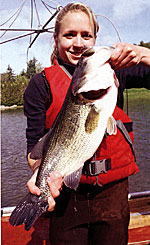
I ask how many students have ever caught a 5 pound bass in New York State. A bunch of hands go up. I am skeptical. Then, I ask them how many have ever caught a 10 pound bass? Many hands go down but one or two hands stay up. I am even more skeptical and fear that we have entered the realm of the little white lie. Then I ask them if they weighed the fish and if they took a picture. Most of them sheepishly admit "Well, no."
Next, I do something a little non-traditional for a fisheries professor .... I place a fish bounty. I take out a one hundred dollar bill and place it on the projector to blow it up on the screen at the front of the room. Here is the challenge I throw down: "If anyone in this class catches a New York State bass that is over ten pounds, I will give you this $100 bill." Then I go a step further and expand the challenge, "I don't care if it is you, your family, friends, acquaintances, bass professionals catching feed trained bass, private pond bass, any bass, from anywhere in the state that weighs 10 pounds or over.... then you can have this $100 bill." Heck, I would even take a newspaper clipping that said someone caught the bass in a local paper. In 15 years of teaching I have never lost my $100, and the biggest bass I have ever seen in New York State is 7.5 pounds. Then I say "Want to make a million bucks by the time you are 30?" Find a way to grow 10 pound bass in an upstate New York lake, when this lake may not get to 70 °F for 30 days a year and it may never get to 80 °F in any year of that fishes life.
Let's go back to Lake Champlain for a minute. What was the warmest temperature in 435 square mile, Lake Champlain at the Burlington gauging station in the last 5 years? It was 78 °F on 17 August 2009. And the largest, all tackle record largemouth bass for the Lake Champlain derby? It was 6.94 pounds! Yep. That was the biggest bass EVER weighed in the 29 year history of the Lake Champlain derby where THOUSANDS of excellent bass anglers (many of them professionals) fish each year for money, trying to catch the largest bass in the lake. In fact, the derby organizers have one-upped the Cornwell $100 challenge and made their contest worth $50,000. This year, they will award 50 large ones to anyone who breaks the tournament record by catching a largemouth bass over 6.94 pounds. We can learn a lot about fish by analyzing derby results. I really hope someone wins.....but I bet they won't land a 10 pounder.
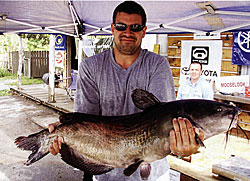
Anyway, enough talk about derbies. What can you learn from these stories? Well, for one thing, warmwater species of fish grow low and slow in lakes where water temperatures are cold. To grow really large, largemouth bass, it takes warm water and great forage that overlap in habitat with those bass. Many bass researchers think that bass grow the best when water temperatures are between 75-80 °F. Further, most fisheries biologists believe that bass get the most growth from their food at 80 °F. So what? Well, if you have a pond on the top of the mountain in upstate New York where your water temperature never reaches 80 °F, you'll have to be durn good to grow even a five pound largemouth and a 10 pounder is nearly impossible in a climate that is too cold. Notice I said "nearly impossible" because the New York State record is over 11 pounds ... so it can be done. Also, there are some folks who are taking innovative approaches to raising feed trained bass indoors in the winter and in ponds summer. Most bassologists agree that largemouth do not grow when water temperatures are less than 50 °F. Lake Champlain averages about 160 days a year when the water temperature is above 50 °F. Who cares about Lake Champlain and other large lakes? I do. Most ponds warm up more quickly than larger lakes but those ponds also give up their heat faster than larger lakes, evening things out a bit. And usually a large lake has a forage base that we envy and try to duplicate in ponds. Therefore, large lakes often grow some trophy bass. To make a long story short, in my neck of the woods, bass will start growing around the last week in May or the first week in June and will stop around the first week in November.
In the South, where water temperatures may approach or exceed 90 °F, the opposite may be the problem. The water temperature may be too warm for good bass growth. The upper limit for bass growth appears to be around 85°F and temperatures that approach 90 °F shut down growth altogether. The lethal limit for largemouth is routinely published as 95 °F. Warm water has a diminished ability to hold oxygen, while the metabolism of the fish speeds up, compounding the problem. Water that is too warm is not good either. So what can you do?
You can make your pond the best depth no matter what part of the country you live in. In deeper ponds, the thermocline is deeper than shallow ponds and fish have a better chance to find the depth of water where the temperature is right for optimum fishy happiness. We know this as fisherman already. When it is really hot, bass tend to be deeper in the water column, often around deep structure. So, build your pond with deep, intermediate and shallow depth structures so fish (and bait too) can hold in a depth of their choosing. This will give you better growth throughout the growing season in your part of the country.
Mark Cornwell is a fisheries professor at SUNY-Cobleskill in Cobleskill, New York. His passion is raising walleye and the /.Q. of fisheries students in the Northeast. Reach him at CORNWEMD@Cobleskill.edu.
Reprinted with permission from Pond Boss Magazine

